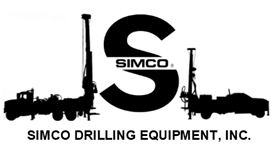Every year, crews all over the country are faced with severe weather conditions such as tornadoes, flash floods, and lightning. Tornadoes, alone, are responsible for taking the lives of roughly 100 people each year.

Of course, weather severity varies according to the seasons and location of the drilling site, but spring and summer are typically the most volatile months. Keep your crews and equipment safe when the weather gets dangerous by keeping the following information in mind.
- Always be aware of different weather conditions and forecasts. Knowing what to expect and being prepared can make all the difference.
- Remember that the mast of a drill rig can act as a lightning rod in a storm. The crew should seek shelter away from the rig when a storm that can produce lightning is approaching.
- Tornadoes can develop quickly and unexpectedly in a thunderstorm. With destructive wind speeds of up to 200 miles per hour and the ability to travel across the land at 30 to 60 mph, it’s imperative to stay ahead of the threat. When severe weather is forecast, designate a crew member to monitor local radio for warnings. Because there is rarely time to drive to safety, crews should know the location of the nearest shelter, or be prepared to take cover in a ditch or other low spot.
- Flooding can occur unexpectedly in almost any location, especially with severe storms that drop a lot of rain in a short period of time. When working in low-lying areas, crews should keep all tools and equipment off the ground and never drive through flooded areas. It’s hard to know how deep the water is or whether it has compromised the roadbed, and it doesn’t take a lot of rushing water to sweep vehicles off the road.
- Hurricane forecasts usually allow plenty of time to prepare before the storm hits. Crews should use this time to secure drilling equipment and structures before relocating to safety.
These weather-related dangers don’t apply to every part of the country, so it’s important to discuss the specific risks your crew may face based on your location. By discussing the precautions and procedures they need to know, you can protect yourself, your employees, and your drilling equipment from potential severe weather hazards.



